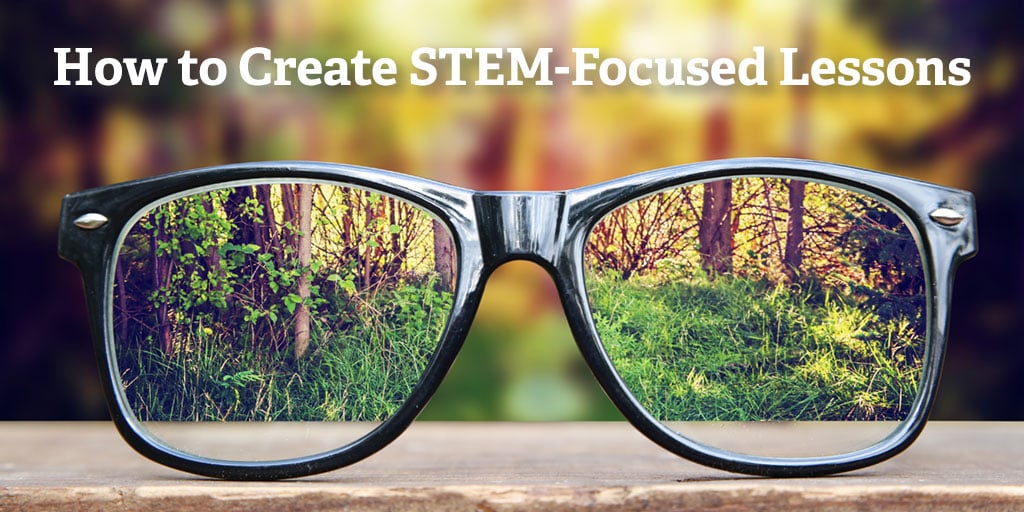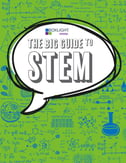
STEM learning is at the forefront of education today—and it shows no signs of slowing down. The focus on STEM subjects (science, technology, engineering, and math) is a necessity in order for Americans to be competitive in the job market in future years. Careers in these fields will continue to grow, so it's imperative that we make STEM a priority for today's students in order to prepare them for the jobs of tomorrow.
New to this mix is the addition of “A” for art or agriculture in the classroom to create STEAM, by which the power of learning is enhanced (much like water is changed to steam, creating energy). After all, art makes you think, look, and feel—all of which are needed for innovation. Why agriculture? Because we need it to survive, of course! If you eat, you need agriculture. If you wear clothes, you need agriculture. If you take medicine, live in a house, or write with a pencil, you need agriculture.
So, I put it to you to convert your thinking to STEAM rather than STEM when tweaking your already great lesson plans in order to create STEAM-focused lessons. Here are six ideas for ways this can happen:
- STEAM Lessons Involve Teamwork
Teamwork is a 21st century skill that corporations are looking for when hiring new employees. Create grading rubrics that enhance the use of each student’s skill set during a group assignment, rather than just checking a task as completed. For example, have a worksheet where each member of the team must explain their role and check off the key elements they personally contributed as part of the assignment. This will not only reduce the number of papers you need to grade, but will also help to enforce the idea that when a team works together, great things can be accomplished—including a good grade.
- Incorporate Hands-On Learning
STEAM lessons must include hands-on inquiry and open-ended exploration. Like a guide through the wilderness, a teacher’s lesson content should first guide their students through the maze of the unknown and then allow their students to control their own ideas and design their own investigations to apply the newfound knowledge. In that way, critical thinking skills are developed.
- Make It Relevant
It is important to remember that when planning STEAM lessons, you also need to focus on real-world issues and problems. Students must understand the issue first to learn basic concepts, and then apply the concepts learned in order to innovate. Innovation is another 21st century skill that makes an individual highly valued in today’s workplace. Visit MiddleWeb to find real-world project suggestions students might focus on.
- Turning Failure Into a Positive
Teachers should retool their lesson planning to include failure as a necessary part of the learning process. Parents, teachers, and even students often see failure as a negative act. But truth be told, the act of failing creates an opportunity to develop tenacity, grit, and perseverance. Not every student is the golden athlete or wonder mathlete, yet their unique skill sets are equally as important when problem solving. I like to use the word FAIL as a positive thought acronym. FAIL is the “First Attempt In Learning.” Don’t ignore the “F” grade, embrace it to create and develop a solution so that students accept and learn from them and try again. The lesson focus is on developing solutions to persevere, not just content knowledge.
- Weaving Math and Science Into Your Lessons
Don’t forget that STEAM lessons should also apply rigorous math and science content. Plan time to collaborate with other math and/or science teachers to gain insight into how course objectives can be woven into one of your lessons. Students can then begin to see that science and math are not isolated subjects, but work together to solve problems—adding relevance to math and science learning.
- Get Creative
Use art or agriculture to engage your students in math, history, or science concepts. For my high school students, I like to use art by having my students create emoji-style picture icons to remember a concept, followed by a correctly structured complete sentence definition. Another example is when I ask my ecology students to explain the processing of a particular recycled product using a storyboard or graphic novel depicting a superhero or villain rather than a research paper. Mathematics can interweave agriculture with students calculating the square footage of a field, the percentages of nutrients that need to be placed into the soil, or how much profit is gained from the sale of harvested wheat vs. the expense of planting the wheat. It is all in the approach and not just the content.
Put It All Together
To start down that path of innovation, I assemble my students into cooperative groups of no more than four. Their task is to define innovation in one of the following ways: a sentence, a list of ten words, a pictorial representation, or another way of their choosing. This way, they work as a team (tip #1), control their way to solve the assignment (tips #2 and #3), and include creativity (tip #6) immediately. Each group then displays their work in a “gallery” for the entire class to view during a “gallery walk” to see what the other groups developed.
Next, the students view a video about innovation. During the video, I have the students write down each innovator’s name, what they do, and something they said that engaged them. Did any of what the innovators said match your students’ gallery walk of ideas? Probably. I then ask students to share what innovations in biology, ecology, or any topic they can name. You are now on your way to incorporating STEAM into the classroom.
 Educating today’s students to prepare them for the future can be daunting, but these ideas are a great way to introduce students to STEM and STEAM learning in a fun, engaging way. For more information and valuable resources, be sure to download our “The Big Guide to STEM” eBook today!
Educating today’s students to prepare them for the future can be daunting, but these ideas are a great way to introduce students to STEM and STEAM learning in a fun, engaging way. For more information and valuable resources, be sure to download our “The Big Guide to STEM” eBook today!



